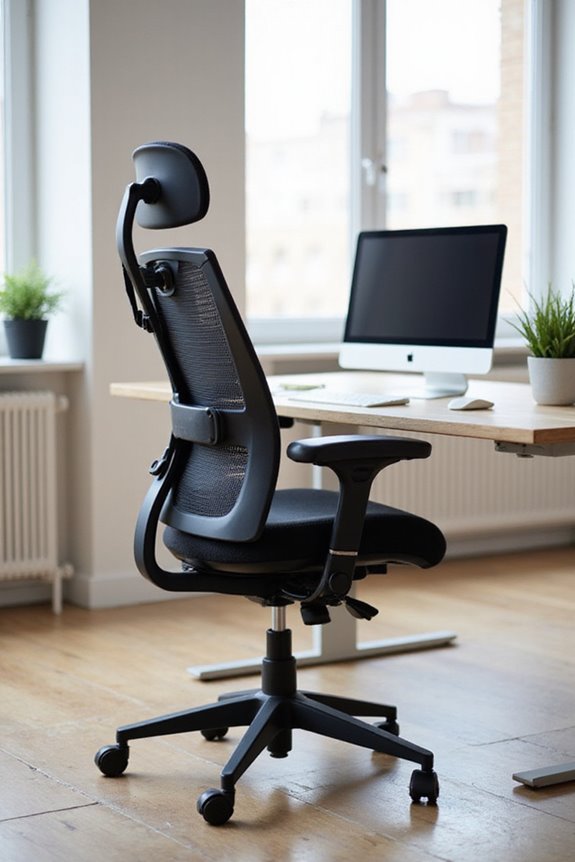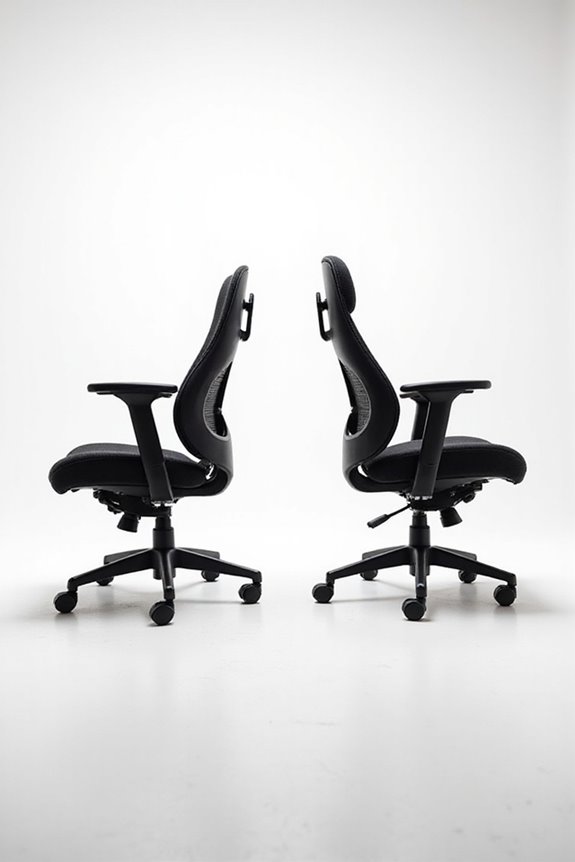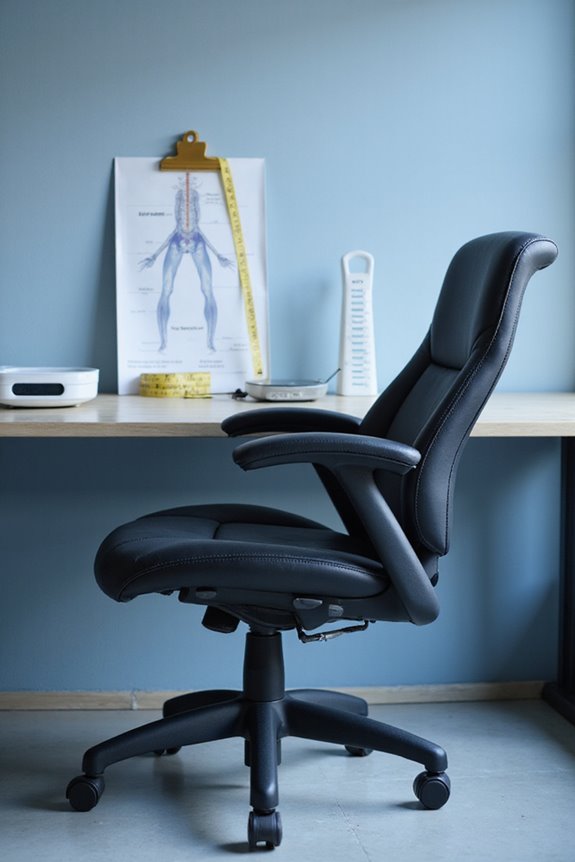An ergonomic chair is designed to enhance comfort and support good posture while sitting for long periods. It features adjustable height, lumbar support, and customizable options like seat tilt and armrests. By promoting healthy sitting positions, it helps prevent musculoskeletal issues, improves circulation, and reduces back pain. Investing in an ergonomic chair means better focus and productivity. If you’re interested in understanding its key features and how it compares to traditional chairs, I’ll provide more insights.
Key Takeaways
- An ergonomic chair promotes comfort and supports good posture during long periods of sitting, reducing the risk of musculoskeletal disorders.
- Essential features include adjustable height, lumbar support, and customizable options to fit various body types and preferences.
- Using an ergonomic chair improves circulation and reduces muscle strain, enhancing overall well-being and productivity at work.
- These chairs are designed to maintain the natural curvature of the spine, significantly reducing back pain and discomfort.
- Investing in an ergonomic chair leads to long-term health benefits, making it a worthwhile addition to any workspace.
Definition of an Ergonomic Chair
An ergonomic chair is a specially designed seating solution aimed at promoting comfort and supporting good posture during prolonged periods of sitting. The chair design incorporates several key features that cater to individual needs. For instance, adjustable height allows users to align the chair with their desk, while seat width and depth provide ample space for movement. Lumbar support is essential for reinforcing the lower back, and the backrest recline enables relaxation without compromising posture. Additionally, armrests help reduce tension in the arms, enhancing overall comfort. With customizable options like seat tilt and backrest adjustments, ergonomic chairs adapt to various body types, ensuring a supportive experience tailored to each user’s requirements. Many ergonomic chairs incorporate adjustable lumbar support into their design to promote overall well-being.
Health Benefits of Using an Ergonomic Chair

The health benefits of using an ergonomic chair are significant, particularly for those who spend long hours seated at a desk. First and foremost, these chairs assist in musculoskeletal prevention by providing essential support that promotes healthy sitting postures. With adjustable features, ergonomic chairs help mitigate the risks of nerve compression and reduce muscle strain, which can lead to discomfort.
Additionally, they improve circulation by allowing ideal leg positioning, preventing issues like swelling or numbness. The backrests are designed to support the natural curvature of the spine, which reduces back pain—a common concern for office workers. By prioritizing comfort and support, ergonomic chairs not only enhance well-being but can also lead to increased productivity and reduced absenteeism. Furthermore, incorporating proper dimensions in ergonomic accessories, like adjustable chairs, can significantly enhance overall comfort during long working hours.
Key Features to Look For
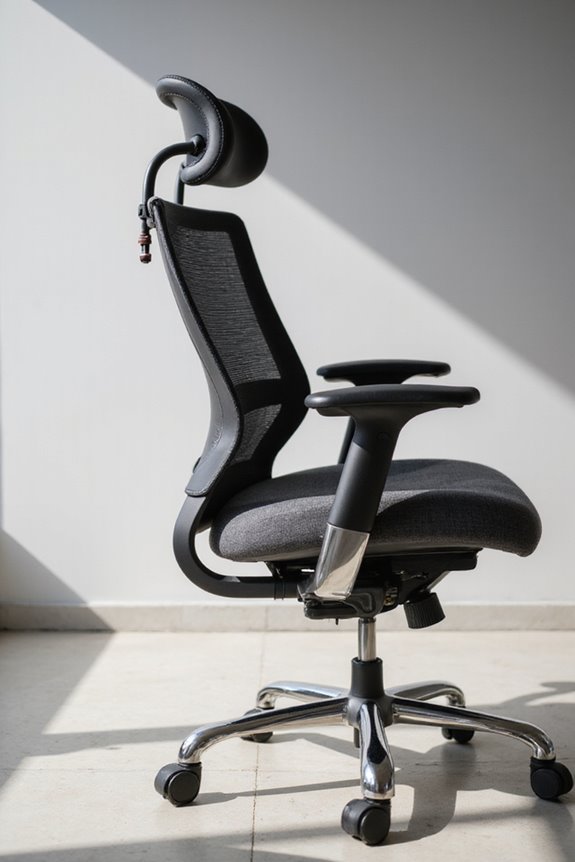
When selecting an ergonomic chair, several key features play an important role in guaranteeing both comfort and effective support during long hours of sitting. First, consider adjustability features. A chair should allow you to modify seat height, depth, and lumbar support to fit your unique body shape. Adjustable armrests are also crucial for arm support.
Next, look for comfort options such as adequate cushioning and breathable materials to enhance your sitting experience. A seat tilt with multiple lock positions can provide flexibility for various tasks. Finally, verify the chair has a robust weight capacity and a durable design for long-term use. Choosing a chair with these features will greatly improve your comfort and productivity at work.
Reasons to Invest in an Ergonomic Chair
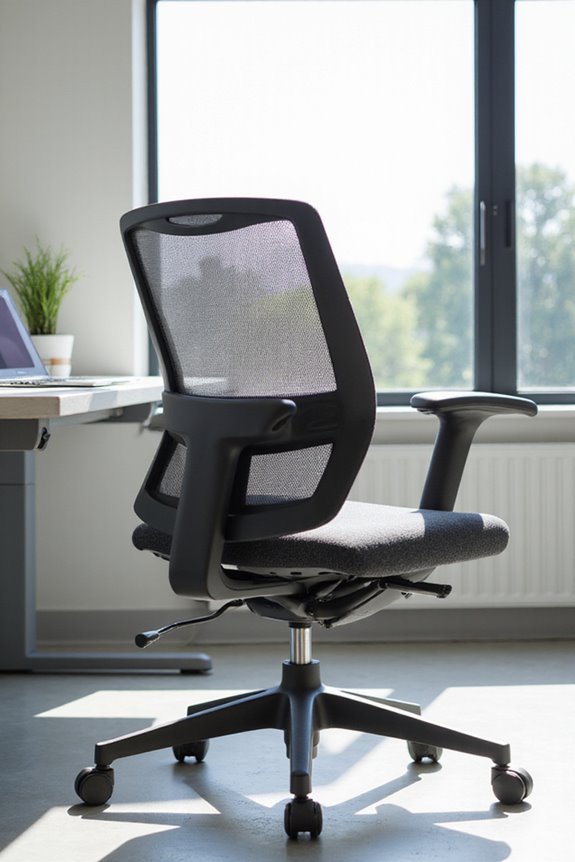
Investing in an ergonomic chair is essential for anyone who spends long hours seated, as it directly impacts overall health and productivity. One significant reason to contemplate this investment is the reduction in musculoskeletal disorders (MSDs) through proper support and alignment. Ergonomic trends emphasize the importance of enhancing posture, which alleviates strain on the back and neck. Additionally, ergonomic chairs promote better blood circulation, preventing discomfort during extended work sessions.
The choice of chair materials also matters; high-quality materials can enhance durability and comfort. In turn, this comfort can lead to increased focus and improved work quality. Overall, an ergonomic chair not only fosters a healthier workspace but also boosts productivity, making it a smart choice for anyone dedicated to their work. Moreover, investing in chairs with high-quality materials ensures long-lasting support and comfort that can significantly enhance your work experience.
Comparison With Traditional Chairs
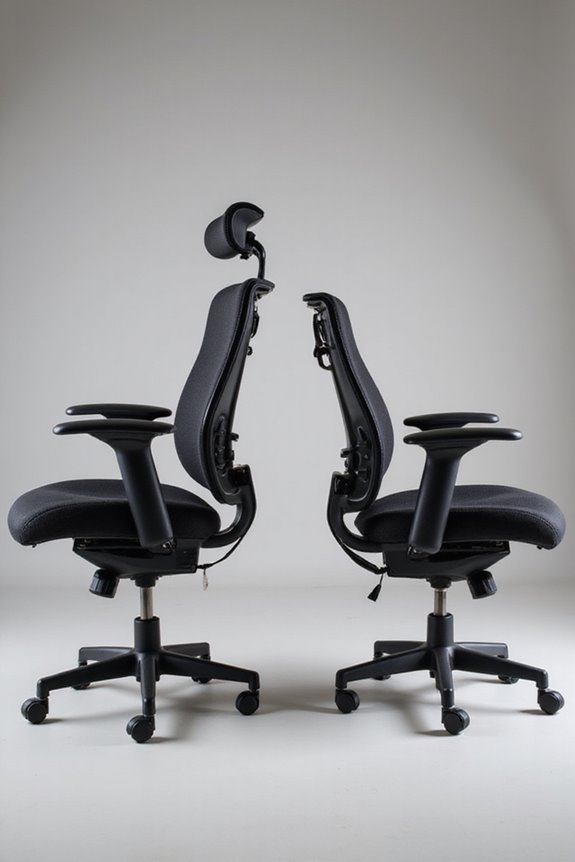
While traditional chairs might seem like a cost-effective solution for seating needs, they often fall short in providing the necessary support for prolonged sitting. Ergonomic design focuses on promoting healthy posture, which is vital when you’re seated for long hours. Unlike traditional chairs, which typically use basic chair materials, ergonomic chairs feature advanced materials that enhance comfort and support.
Additionally, ergonomic chairs offer adjustability options tailored to different body types, reducing discomfort and fatigue. In contrast, traditional chairs lack these essential features, often leading to poor posture and long-term health issues. Although ergonomic chairs may come with a higher price tag, their long-term benefits, including durability and reduced healthcare costs, make them a worthwhile investment in your well-being.
Tips for Selection and Maintenance
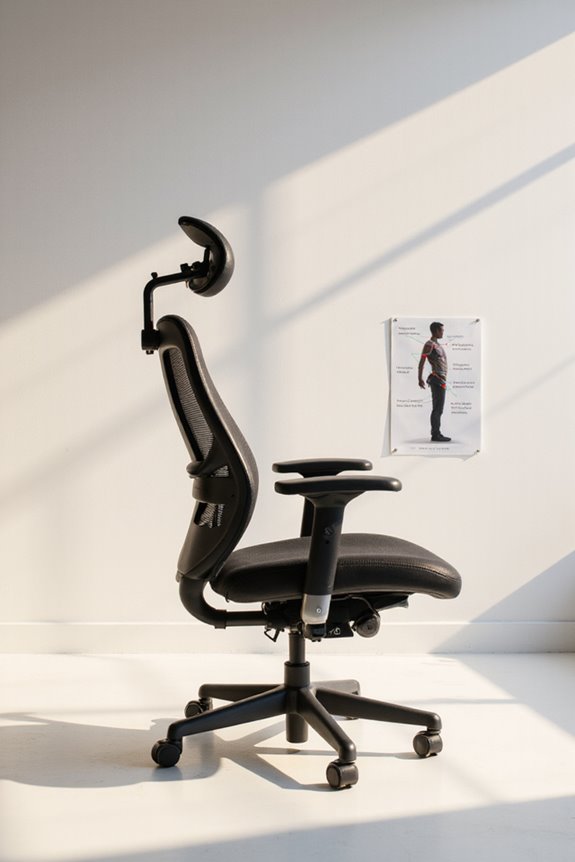
Selecting the appropriate ergonomic chair can greatly influence your comfort and productivity, so it’s essential to take into account specific selection criteria during selection. Make sure the chair has adjustable seat height, a supportive backrest that targets the lumbar region, and adequate seat depth to avoid pressure behind your knees. It’s also important that the chair complies with ANSI/BIFMA standards for durability and safety.
For maintenance, follow these tips: regularly inspect for loose parts, clean upholstery and frame to prevent wear, lubricate moving components for smooth operation, and check screws and fasteners periodically. Promptly replace any worn or damaged components to extend your chair’s lifespan and maintain its ergonomic benefits.
Impact on Productivity and Well-being
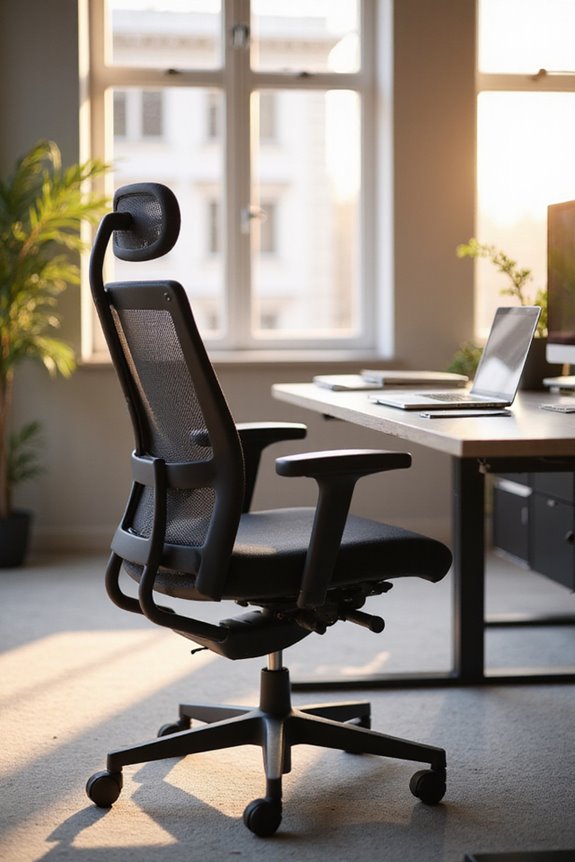
Understanding the impact of ergonomic chairs on productivity and well-being is essential for anyone looking to enhance their work environment. Ergonomic design plays an important role in workplace efficiency, as these chairs are specifically tailored to support natural body posture. By allowing adjustability in seat height, lumbar support, and armrests, they help reduce discomfort and the risk of musculoskeletal issues. Research indicates that using ergonomic chairs can boost productivity by up to 15%. When employees are comfortable, they can focus better, leading to improved job satisfaction and reduced absenteeism. Ultimately, investing in ergonomic solutions not only enhances individual well-being but also contributes greatly to overall workplace performance and efficiency.
Frequently Asked Questions
How Much Does an Ergonomic Chair Typically Cost?
When I look for ergonomic chairs, I find prices typically range from $200 for affordable options to over $1,000 for premium features. It’s essential to balance comfort and budget for long-term satisfaction.
Can I Use an Ergonomic Chair for Gaming?
Using an ergonomic chair for gaming is like having a trusty shield in battle. With adjustable chair features, I maintain ideal gaming posture, staying comfortable during long sessions while dodging fatigue and improving my overall performance.
Are Ergonomic Chairs Suitable for Short People?
As a short person, I find ergonomic chairs incredibly helpful. Chair height adjustments guarantee my feet rest flat on the floor, providing comfort and support, which is essential for long hours of sitting.
How Often Should I Adjust My Ergonomic Chair?
You might not realize it, but chair customization is essential. I adjust my ergonomic chair every 3-6 months or whenever discomfort creeps in. Regular adjustments guarantee my posture stays aligned and discomfort remains at bay.
Do Ergonomic Chairs Come in Different Styles and Colors?
Absolutely, ergonomic chairs come in various styles and colors. I love how I can choose from sleek task chairs to luxurious executive models, each available in a range of colors to match my office decor.

